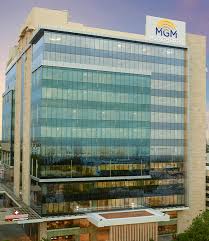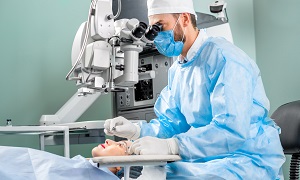Best Doctors in India for Glaucoma treatment
- Opthalmologist, Chennai, India
- Over 26 years’ experience
Profile Highlights:
- Dr. Pratik Ranjan Sen is a specialist in Ophthalmology and serves as an Ophthalmologist – Consultant at Apollo Hospitals, Chennai.
- He has performed over 8000 Retinal detachment and other Vitreo retinal disorder surgeries.
- Dr. Pratik Ranjan Sen considers his profession a mission and is dedicated to his work. Due to this, he has gained enough trust and recommendations from his patients.
- Ophthalmologist, Chennai, India
- Over 21 years’ experience
Profile Highlights:
- Dr. Viswanathan P is one of the best eye surgeons in India having an overall experience of 21 years.
- He is a qualified doctor from the Tamil Nadu University of India and possesses a degree in MBBS and MS.
- One can visit him for routine eye check-ups or retina examinations and services like eye surgery, retina surgery, cataract surgery, etc.
- Ophthalmologist, Gurugram, India
- Over 13 years’ experience
Profile Highlights:
- Dr. Svati Bansal is an esteemed consultant and practitioner of ophthalmology in Gurugram.
- Her specialty lies in orbit and oculoplasty, ocular oncology, ocular trauma, and neuro-ophthalmology.
- She has fellowships in neuro-ophthalmology and ocular motility, oculoplasty, and facial aesthetics, and ocular oculoplastic and ocular oncology.
- Ophthalmologist
- Over 10 years' experience
Profile Highlights:
- Dr. Amit Jain is an experienced Ophthalmologist based in Mumbai, who specializes in treating patients with eye issues, particularly those related to Vitreo-Retina, Uvea, and ROP.
- He is an expert in employing the most recent techniques in eye surgery to address conditions like diabetes that damage the eyes and correct issues with the back of the eye.
- With more than 10 years of expertise, Dr. Amit Jain has made a name for himself as a leading expert in the field of eye care.
- He completed his medical training in Ophthalmology at the Dr. Rajendra Prasad Centre for Ophthalmic Sciences at AIIMS in New Delhi, a renowned institute for eye treatment. Later, he went on to pursue long term clinical fellowship in Vitreoretina at Sanskara Netralaya in Kolkata and Chennai.
- He started his professional career at Shri Ganapati Netralaya in Jalna, Maharashtra as an Associate Consultant in the department of Vitreoretina and Uvea services. And now, he serves as a Consultant in the Department of Ophthalmology at Fortis Hospital, Mulund.
- Apart from being a medical practitioner, Dr. Jain also enjoys imparting information and knowledge among young minds. He mentors aspiring medical professionals who wish to focus on eye care.
- Several of his works on the topic of eyes have been published in prestigious medical publications. Additionally, he often speaks at medical conferences where eye specialists from throughout the nation get together to exchange knowledge.
Best Hospitals in India for Glaucoma treatment
Pushpawati Singhania Hospital & Research Institute, New Delhi
- City: New Delhi, India
Hospital Highlights:
- Established in 1996, Pushpawati Singhania Research Institute is one of the top hospitals in the NCR region, as well as one of the top facilities in India for gastroenterology. The hospital is one of South Asia’s first institutes in medical and surgical treatment for diseases related to digestion.
- The hospital is equipped with state-of-the art facilities coupled with the latest equipment as well as renowned consultants from various parts of India as well as other parts of the world.
W Pratiksha Hospital, Gurgaon
- City: Gurugram, India
Hospital Highlights:
- W Pratiksha Hospital, Gurugram, is one of the best hospitals in the NCR region. It is also a top hospital in India for IVF. Since its inception, the hospital has performed over 5500 successful IVFs. The hospital also specializes in gynecology.
- With over 20 years of experience in providing quality healthcare, the hospital is known as one of the most trusted and valued health providers in India.
- Equipped with world-class medical facilities and advanced technology, the hospital’s doctors and clinicians also have a track record of delivering excellent results. The hospital is also known for focusing on preventive well-being as much as on curative treatment.
- The hospital has earned the trust of its patients, by providing the best available treatments at affordable costs.
Narayana Superspeciality Hospital, Gurugram
- City: Gurugram, India
Hospital Highlights:
- Situated near DLF Cyber City, Gurugram, Narayana Superspecialty Hospital is one of the top medical facilities in the Delhi NCR region, catering to the needs of the people. Known for its commitment to quality medical care and patient service, the hospital is a state-of-the-art facility with planned and well-equipped sections, which includes a spacious OPD area as well as comfortable patient rooms.
- It is the closest super-specialty hospital from Indira Gandhi International Airport towards Gurugram, and also the nearest super specialty hospital from DLF Cyber City. It is also close to major residential areas in Gurugram.
- It is part of the renowned Narayana Health Group. Established in 2000, by Dr. Devi Shetty, a renowned cardiac surgeon, it has grown to be one fo India’s leading healthcare groups.
Sir Ganga Ram Hospital, New Delhi
- City: New Delhi, India
Hospital Highlights:
- Sir Ganga Ram Hospital, New Delhi is known to provide the latest medical procedures with the latest technology in all of its units.
- The hospital has a team of reputed doctors, nurses, and healthcare professionals that ensure that patients receive quality care at affordable costs.
- Staffed with a team of highly qualified doctors, dedicated nurses, and paramedical and non-medical staff, the hospital aims to lead in healthcare delivery, medical education, training, and research.
- As per the vision of the founder, the hospital also provides free treatment to the economically weaker sections of society.
- Sir Ganga Ram Hospital also provides training to young doctors under the Diplomate in National Board(DNB) program. The DNB program at the hospital was started in 1984 and it is known for currently running the maximum number of DNB specialties in the country. It also has the distinction of having the first bone bank in India.
KIMS Hospital, Hyderabad
- City: Hyderabad, India
Hospital Highlights:
- KIMS Hospital (a brand name of Krishna Institute of Medical Sciences) is one of the largest and best multi-speciality hospitals in Hyderabad. The hospital provides various treatments to an enormous number of patients.
- The hospital has a capacity of more than 3000 beds. KIMS Hospitals offers different healthcare services in more than 25 specialities and super specialities.
- The hospital is equipped with modern medical equipment and technology. It has robotic equipment to provide minimal invasive techniques for patients.
- The hospital is aimed at providing world-class healthcare facilities and services at an affordable cost for patients.
- The various specialities and departments of the hospital include neurosciences, gastroenterology & hepatology, robotic science, reproductive sciences, dental science, oncological sciences, organ transplantation, heart and lung transplantation and mother and child care.
Fortis Hospital, Shalimar Bagh
- City: New Delhi, India
Hospital Highlights:
- Fortis Hospital in Shalimar Bagh is a multi-super specialty hospital that strives to provide world-class patient care by leaving no stone unturned.
- Fortis, Shalimar Bagh, with 262 beds and a 7.34-acre footprint, provides the best level of medical care through its team of doctors, nurses, technicians, and management professionals.
Reliance Hospital, Mumbai
- City: Mumbai, India
Hospital Highlights:
- Reliance Hospital is one of the best super-specialty care hospitals in Navi Mumbai.
- The main purpose of this hospital is to become a trustworthy place for the best health and hope for society. The hospital is well connected to the suburbs of Mumbai and Navi Mumbai.
- The hospital has various specialty departments, viz., Accident & Emergency, Anesthesiology, Dental Services, Dermatology, Diabetology, Dietetics Nutrition, Endocrinology, ENT, Gastroenterology, General Surgery, Gynaecology And Obstetrics, Hepato Pancreato Biliary Surgery, Infectious Disease, Internal Medicine, Interventional Radiology, Laboratory Medicine, Minimal Access Laparoscopic Surgery, Nephrology, Neurosciences, Opthalmology, Orthopaedics, Paediatrics, Pain Management Palliative Care, Physical Medicine Rehabilitation, Plastic And Reconstructive Surgery, Psychiatry, Pulmonary Medicine, Radiology, Rheumatology, Transplant, Urology Andrology, Vascular Surgery
Lilavati Hospital & Research Centre, Mumbai
- City: Mumbai, India
Hospital Highlights:
- Lilavati Hospital & Research Centre is India’s premier multi-speciality tertiary care hospital and has been recognised as a global medical excellence centre.
- Lilavati Hospital & Research Centre has built an unrivalled level of trust with its patients over the years, thanks to a solid foundation that comprises cutting-edge facilities, the best medical competence, research, education, and charity endeavours.
- The hospital is quite proud of the fact that it now serves patients from all kinds of backgrounds, not just from the United States but from all around the world.
- The hospital has a total of 323 beds, one of the largest Intensive Care Units (ICUs), 12 Operation Theatres with modern amenities, over 300 consultants, and almost 1,800 personnel.
Venkateshwar Hospital, Dwarka, New Delhi
- City: New Delhi, India
Hospital Highlights:
- State-of-the-art technology and devoted healthcare professionals have been brought together under one roof at Venkateshwar Hospital to provide genuine medical care. The hospital’s professionals work together as a team to deliver the best possible treatment to their patients, using the most sophisticated equipment and information technology.
- Venkateshwar Hospital’s mission is to attain global excellence in healthcare by employing evidence-based, ethical clinical practices and cutting-edge technology by a team of highly skilled experts.
MGM Healthcare, Chennai
- City: Chennai, India
Hospital Highlights:
- Located in Chennai, India, MGM Healthcare is a top multispecialty hospital that provides all medical services under one roof.
- Since its founding in 2019, MGM Healthcare has quickly become a leading national referral centre, creating several innovative flagship initiatives.
- MGM Healthcare combines next-generation medical and digital technologies to provide better patient results.
- With 12 centres of excellence, more than 400 inpatient beds, 100 intensive care unit beds, and 24/7 emergency care, MGM Healthcare leaves no chance in redefining the patient experience in Chennai.
- MGM Healthcare boasts 250+ expert doctors across 30+ departments, including Cardiology, Pulmonology, Neurology, Obstetrics & Gynaecology, and more.
- They house 12 specialized Centres of Excellence, including Neurosciences, Orthopaedics, and Multi-Organ Transplantation.
- Their team of doctors, nurses, and paramedics works together to give every patient individualized treatment.
What is Glaucoma?
The optic nerve needs to be in a proper condition for good vision and Glaucoma is a serious condition that directly affects and damages the same. The most common cause of such damage is excessive pressure on the eyes. According to several pieces of research, Glaucoma is presently one of the leading causes that result in blindness, especially in older adults above 60 years of age.
The biggest problem with Glaucoma is that it often develops silently and you won’t be able to take proper precautions. The fact that the effect is gradual means you will only be able to realize the problem when it has already developed to an advanced stage. Since glaucoma causes an irreparable loss of vision, it is better to be careful while you still can.
The best way is to get regular check-ups done. Every visit to the Ophthalmologist must include thorough eye pressure measurements. As a result, diagnosis becomes easier from the early stages if there seems to be a problem. The silver lining to the entire story is that if Glaucoma can be detected at the initial stage, severe effects such as vision loss can be prevented or at least delayed. A person can completely get rid of the problem through proper procedures and surgeries.
What are the types of Glaucoma?
- Open-angle Glaucoma
- Angle-closure Glaucoma
- Normal-tension Glaucoma
- Congenital Glaucoma
- Pigmentary Glaucoma
An in-depth look into Glaucoma symptoms
There are several stages of Glaucoma that are often used as alternative names for the disease too. Before getting into the symptoms, you must get an idea of the fact that they differ based on the stage and type of Glaucoma that is detected in your case. The severity of symptoms also varies depending on similar conditions. In this section, we will learn about Glaucoma symptoms based on their stage and type. So, let’s begin-
Open-angle Glaucoma
- Blinding and patchy spots in the central or peripheral vision that may appear in both eyes at frequent intervals
- Tunnel vision (during the advanced stage)
Narrow-angle or Acute-Closed Glaucoma
This type is often very painful and sometimes reported as the worst version of Glaucoma. If someone is experiencing any of the below-mentioned, you should take the person immediately to an ophthalmologist for emergency treatment. If you ignore the conditions even for a day, it might lead to severe conditions and even permanent vision loss.
The following are the symptoms-
- Painful throbbing in the eyes
- Vomiting and nausea
- Eye redness
- Dilated pupil
- Headaches (can happen on just one side of the head as that of the affected eye)
- Visions of light rings or halos
- Foggy or blurry vision
Congenital Glaucoma
The term ‘congenital’ makes it clear already that the below-mentioned Glaucoma symptoms are associated with infants and children during their very early years.
- Tearing, eyelid spasms and light-sensitivity
- A habit of rubbing the eyes, keeping eyes closed for the maximum part of the day and squinting
- Larger than the normal cornea and a visible cloudy layer in that part
Secondary and other types of Glaucoma
The secondary or other types of Glaucoma symptoms depend on the causes of eye pressure. It can be anything that leads to weird visions such as halos and light rings. The following are a few common symptoms of secondary Glaucoma.
- Inflammation (also known as uveitis)
- Photophobia or light-sensitivity
- Eye injuries such as corneal edema, retinal detachment, and bleeding
Glaucoma causes
As mentioned earlier, Glaucoma is a major effect of excessive eye-pressure which eventually causes damage in the optical nerve. As a result, there is a development of blinding spots that occur in your visual field. The most common reason for eye-pressure to increase is excessive fluid build-up in the eyes also known as ‘aqueous humor’. This fluid does not flow down in the form of tears but spreads inside the eye.
It is normal if there is a limited fluid build-up that will eventually flow down through the trabecular tissue at the intersection point of the cornea and iris. However, when there is the excess fluid build-up that does not drain out properly, it becomes a problem and triggers the rise of pressure in your eyes. In some cases, Glaucoma causes also include a family history of the disease.
Basic risk factors
While you must have the basic knowledge about the major symptoms and signs of Glaucoma, it is also important to know that the chronic version of the disease may develop without such signs. So, it is also important that you are aware of the risk factors. They are:
- High intraocular or internal pressure in the eyes
- Using eye drops for a long time
- Age over 60 years
- History of eye surgery or injury
- Being black, Hispanic or Asian
- Genetic history of Glaucoma
- Being extremely farsighted or nearsighted
- Underlying conditions such as diabetes, anemia, high blood pressure and cardiac issues
- Position of the cornea
Diagnosis of Glaucoma
Treatment for Glaucoma
Glaucoma can be treated in the following ways:
Eyedrops
Oral medicines
Surgery
- Laser surgery procedure can slightly increase the flow of the fluid from the eye in open-angle glaucoma or can stop fluid blockage in angle-closure glaucoma. Laser surgery includes:
- Trabeculoplasty involves the opening of the drainage area. A tiny hole is made in the iris which allows the fluid flow more freely.
- Cyclophotocoagulation involves treatment of the middle layer of the eye to reduce fluid production.
- Microsurgery or trabeculectomy. In this procedure, the doctor creates a new channel to drain the fluid which eases eye pressure.
Therapies
So, Glaucoma is a severe condition that requires awareness and immediate attention. You must keep the risks and symptoms in mind and act responsibly by seeking proper treatment for the disease.



















